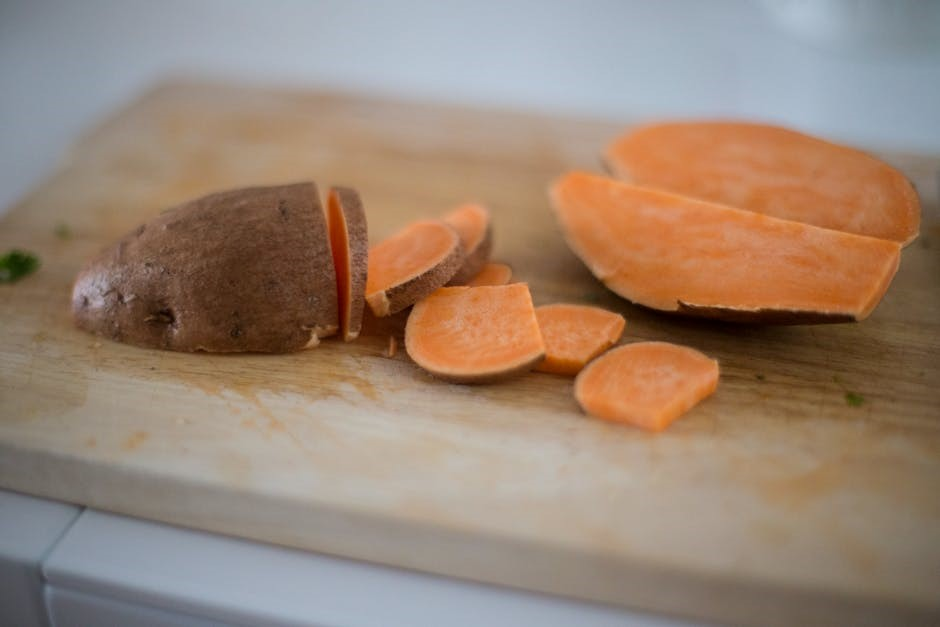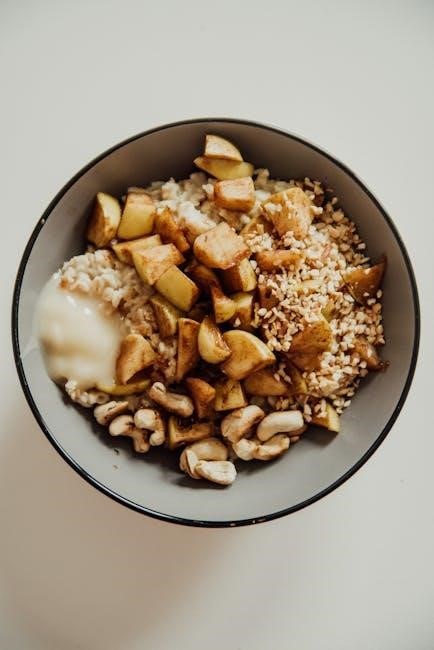Potato vodka is a classic spirit with a rich cultural heritage, offering a smooth and unique flavor profile. Making it at home is a rewarding process that combines tradition and creativity, allowing you to craft a high-quality vodka using simple, accessible ingredients. This guide will walk you through the step-by-step process of creating authentic potato vodka, from selecting the right potatoes to mastering the distillation process. Whether you’re a seasoned distiller or a curious beginner, this journey will empower you to produce a premium spirit that impresses and delights.
1.1 What is Potato Vodka?
Potato vodka is a type of vodka made from fermented potatoes, offering a smooth, creamy texture and a subtle, earthy flavor. Unlike grain-based vodkas, potato vodka is gluten-free and often praised for its rich, velvety mouthfeel. It is crafted by converting potato starches into sugars, followed by fermentation and distillation. This traditional method produces a spirit with a distinct character, making it a favorite among vodka enthusiasts and home distillers seeking an authentic, high-quality product.
1.2 History and Cultural Significance
Potato vodka has deep roots in Eastern European traditions, where potatoes were abundant and served as a staple crop. Its production dates back centuries, with early methods passed down through generations. Originally, potato vodka was a homemade spirit, often crafted in small batches for local consumption. Over time, it gained cultural significance as a symbol of resourcefulness and community. Despite the rise of mass-produced vodkas, potato vodka remains cherished for its authenticity and unique flavor, inspiring modern distillers to revive this traditional craft.
1.3 Benefits of Making Potato Vodka at Home
Creating potato vodka at home offers numerous advantages, including cost-effectiveness and customization. Potatoes are inexpensive and widely available, making home production economical. You can tailor the flavor to your preference by adjusting ingredients and techniques. The process is a fun and rewarding DIY project, allowing you to experiment and share your creations with friends. Homemade vodka often results in a smoother, more authentic product compared to mass-produced options. This hands-on approach fosters a deeper appreciation for the craft and the joy of creating something unique and personal.

Equipment Needed for Making Potato Vodka
Making potato vodka requires specific equipment for mash preparation, fermentation, and distillation. Essential tools include mash tuns, fermenters, and distillation apparatus, ensuring a smooth and safe process.
2.1 Mash Making Equipment
To create the potato mash, essential equipment includes a large pot for boiling potatoes, a masher or blender for breaking them down, and a fermentation vessel. A hydrometer helps measure sugar levels, while a strainer separates solids from the liquid mash. These tools ensure proper starch conversion and a smooth consistency, laying the foundation for successful fermentation and distillation. Investing in quality equipment will enhance the efficiency and quality of your potato vodka production.
2.2 Fermentation Equipment
Fermentation requires a food-grade plastic or glass vessel with an airlock to allow carbon dioxide to escape while preventing contamination. A hydrometer measures the mash’s specific gravity, tracking alcohol production. A temperature control system ensures optimal fermentation conditions, typically between 18°C and 22°C. Sanitized utensils and a fermentation vessel with adequate capacity are essential for a clean, efficient process. Proper equipment setup guarantees a healthy fermentation, crucial for developing the vodka’s flavor and alcohol content.
2.3 Distillation Equipment
Distillation requires a still, which can be a traditional pot still or a reflux still for higher purity. A condenser is essential to cool and condense the vapor back into liquid. A collection vessel captures the distilled vodka, while a thermometer monitors temperatures. A hydrometer measures alcohol content during the process. Ensure all equipment is food-grade and properly sanitized. Optional equipment includes a distillation column for better separation of impurities. Safety gear, like a heat source and ventilation, is crucial for a controlled and safe distillation process.
Ingredients for Potato Vodka
Potatoes are the primary ingredient, chosen for their starch content. Yeast is essential for fermentation, and water quality significantly impacts the vodka’s taste and purity.

3.1 Potatoes: Selection and Preparation
Selecting the right potatoes is crucial for making high-quality vodka. Opt for high-starch varieties like Russet or Yukon Gold, as they yield better fermentation results. Wash the potatoes thoroughly, then peel and chop them into small pieces. Boil or steam the potatoes until soft, then mash them while still warm to release their natural enzymes. Proper preparation ensures the starches are accessible for conversion into sugars during fermentation, which is essential for producing a smooth and flavorful vodka.
3.2 Yeast and Fermentation Ingredients
Yeast is essential for converting sugars into alcohol during fermentation. For potato vodka, use a high-quality distiller’s yeast or champagne yeast, which tolerates high alcohol levels and ferments efficiently. Additionally, include yeast nutrients to support healthy fermentation and ensure optimal alcohol production. Acid blend can also be added to maintain a stable pH level, promoting a clean and smooth fermentation process. These ingredients are crucial for transforming the potato mash into a fermentable liquid, laying the foundation for a high-quality vodka.
3.3 Water Quality and Purification
Water is a critical ingredient in potato vodka, as it directly impacts the flavor and quality of the final product. Use purified water with minimal impurities to ensure a clean taste. Impurities like minerals or chemicals can alter the vodka’s profile, so consider using filtered or distilled water. Some producers even use natural spring water for its purity. Proper water purification, such as activated carbon filtration or reverse osmosis, is essential to achieve a smooth and neutral-tasting vodka. Avoid untreated tap water, as it may introduce unwanted flavors or odors.

The Potato Mash Process
The potato mash process involves transforming raw potatoes into a fermentable mixture. Cook and mash potatoes, then convert their starches into sugars for fermentation, creating the base for vodka production.
4.1 Cooking and Mashing Potatoes
Cooking and mashing potatoes is the first step in creating the mash. Boil high-starch potatoes like Russet until tender, then drain and mash while hot for optimal starch breakdown. Use a ricer or blender to ensure a smooth consistency, avoiding over-mixing, which can make the mash gluey. Add a small amount of water to achieve a thin, even texture, preparing the potatoes for starch conversion and fermentation. This step is crucial for releasing sugars and laying the foundation for a quality vodka base.

4.2 Converting Starches to Sugars
After cooking and mashing, the next step is converting starches to sugars. This process involves adding enzymes like amylase to break down the starch molecules into fermentable sugars. First, cool the mashed potatoes to around 65°C to optimize enzyme activity. Add alpha-amylase to liquefy the starches, then glucoamylase to convert them into glucose. Allow the mixture to rest for 30 minutes to an hour to ensure complete conversion. This step is vital for creating a fermentable sugar-rich mash, which will later feed the yeast during fermentation.

4.3 Creating the Mash
After converting the starches to sugars, combine the mixture with water in a large, sanitized vessel to create the mash. Ensure the consistency is even and free of lumps. Add any additional ingredients like sugar or nutrients to enhance fermentation. Stir thoroughly and monitor the temperature to maintain an optimal environment for yeast activity. This step ensures a uniform base for fermentation, promoting healthy yeast growth and maximizing alcohol production. Properly mixing and preparing the mash is crucial for achieving a high-quality vodka.
Fermentation Process
Fermentation is a critical step where yeast converts sugars into alcohol. Monitor temperature and pH levels to ensure proper conversion. This step is essential for achieving desired flavor and alcohol content.
5.1 Setting Up the Fermentation Environment

Creating the right environment for fermentation is crucial. Use a clean, food-grade plastic or glass container with an airlock to allow gases to escape. Maintain a consistent temperature between 18-22°C (64-72°F) for optimal yeast activity. Ensure the space is free from contaminants and drafts. Properly sanitize all equipment to prevent spoilage. Monitor pH levels and adjust if necessary. A stable environment ensures efficient conversion of sugars to alcohol, laying the foundation for a smooth and flavorful vodka.
5.2 Monitoring Fermentation Progress
Monitor fermentation by observing bubble activity in the airlock, indicating CO2 production. Check the smell; a sour odor may signal contamination. Use a hydrometer to track specific gravity, ensuring fermentation progresses toward the expected alcohol content. Regularly inspect the mash for clarity and separation of layers. Maintain consistent temperature and pH levels. Record observations daily to identify trends or issues early. Proper monitoring ensures a healthy fermentation process, leading to a smoother, more flavorful vodka. Adjustments can be made to optimize conditions for yeast activity and sugar conversion.
5.3 Common Fermentation Issues and Solutions
Common fermentation issues include slow starts, off-flavors, or stuck fermentation. To address these, ensure proper yeast hydration and sufficient nutrients. Maintain consistent temperatures and check for contamination. If fermentation stalls, gently stir the mash or adjust pH levels. Off-flavors can be minimized by using high-quality ingredients and sanitizing equipment. Regular monitoring with a hydrometer helps identify issues early. Addressing these problems promptly ensures a healthy fermentation process and a smoother final product. Proper troubleshooting techniques are essential for achieving optimal results in homemade potato vodka production.
Distillation Process
The distillation process involves refining the fermented mash into a pure spirit, requiring precise temperature control and careful technique to ensure high-quality vodka production.
6.1 Setting Up the Distillation Equipment
Setting up the distillation equipment requires careful preparation to ensure safety and efficiency. Begin by assembling the distillation apparatus, including the still, condenser, and collection vessel. Connect all components securely, ensuring proper sealing to prevent leaks. A heat source, such as a electric heating element or propane burner, is essential for heating the mash. Install a thermometer to monitor and control temperatures accurately. Sanitize all equipment thoroughly to prevent contamination. Finally, test the setup by running a small trial batch to ensure everything functions smoothly and safely before proceeding with the actual distillation process.
6.2 Distillation Techniques and Safety
Distillation requires precise techniques and strict safety measures to ensure a safe and successful process. Always use a heat source that allows for gradual temperature control, as sudden spikes can damage equipment or lead to hazards. Monitor the still’s temperature closely, aiming for the optimal range to separate ethanol from water and impurities. Proper ventilation is essential to prevent the accumulation of flammable vapors. Keep a fire extinguisher nearby and avoid open flames or sparks in the vicinity. Never leave the distillation process unattended, as it requires constant supervision to maintain safety and achieve the desired results.
6.3 Separating Heads, Hearts, and Tails
During distillation, the liquid is divided into three parts: heads, hearts, and tails. The heads, containing volatile compounds, are discarded to remove impurities. The hearts are the purest ethanol, capturing the desired flavor and aroma. The tails, rich in heavier compounds, are also discarded. Proper separation ensures a smooth, high-quality vodka. Monitoring the process closely is crucial, as the transition between these phases can be subtle. This step requires patience and attention to detail to achieve the best results and maintain safety throughout the distillation process.

Filtering and Bottling
Filtering removes impurities, enhancing smoothness and purity. Proper bottling ensures long-term quality, with storage in a cool, dark place recommended.
7.1 Filtering the Distilled Vodka
Filtering the distilled vodka is crucial for removing impurities and enhancing clarity. Use activated carbon or food-grade filters to trap unwanted compounds, improving smoothness and purity. Ensure the equipment is sanitized to prevent contamination. Filter slowly to avoid introducing oxygen or disrupting the vodka’s consistency. This step refines the flavor and ensures a polished finish. Proper filtering is essential for achieving a high-quality, professional-grade vodka.
7.2 Bottling and Storage Tips
Once filtered, transfer the vodka to glass bottles with tight-fitting lids to prevent contamination and oxidation. Store in a cool, dark place to preserve quality and flavor. Avoid direct sunlight, as it can degrade the spirit. For optimal freshness, use smaller bottles and label with the date. Keep bottles upright to minimize contact with the cork or seal. Proper storage ensures your homemade potato vodka remains smooth and flavorful for a long time. Always handle the bottles with clean hands to maintain purity.

Safety and Legal Considerations
Ensure safety by following proper distillation techniques and using protective gear. Check local laws for permits and regulations on home distillation to avoid legal issues.
8.1 Safety Precautions in Distillation
Distillation requires strict safety measures to prevent accidents. Always use protective gear, ensure proper ventilation, and keep a fire extinguisher nearby. Monitor temperature and pressure closely to avoid equipment damage or explosions. Never leave the distillation process unattended, and ensure all connections are secure. Use food-grade materials and follow hydrometer readings accurately. Keep flammable materials away and avoid overheating the still. Familiarize yourself with local regulations and safety guidelines before starting. Safety should always be your top priority when working with heat, flammable liquids, and pressurized equipment.
8.2 Legal Requirements for Home Distillation
Home distillation is heavily regulated and often requires permits and licenses. Check local laws to ensure compliance, as unauthorized distillation can lead to fines or legal action. Many countries require a distiller’s license, and some prohibit home distillation entirely. Even with proper equipment, legal compliance is essential to avoid penalties. Research your area’s specific regulations and obtain necessary permits before starting. Understanding and adhering to these laws ensures a safe and legal home distillation process.

Conclusion
Congratulations! You’ve completed the guide to making potato vodka at home. Experiment with flavors, share your creations, and enjoy the fruits of your labor responsibly.
9.1 Final Tips for Making Potato Vodka
For a superior potato vodka, prioritize quality ingredients and precise measurements. Monitor fermentation closely to avoid off-flavors. During distillation, ensure proper separation of heads, hearts, and tails. Experiment with flavor infusions like herbs or fruits for uniqueness. Store your vodka in a cool, dark place to preserve its smoothness. Always follow safety guidelines and legal requirements. Share your creations with friends and enjoy the satisfaction of crafting a premium spirit from scratch. Happy distilling!
9.2 Encouragement to Experiment and Share
Embrace the creative freedom of crafting potato vodka by experimenting with unique flavors and techniques. Share your homemade vodka with friends and family, enjoying the pride of serving a spirit made with your own hands. Discover the joy of seeing others savor your creation, and don’t hesitate to explore new recipes or methods. Remember, every batch is a chance to refine your skills and uncover new favorites. Happy sharing and cheers to your distilling adventures!
